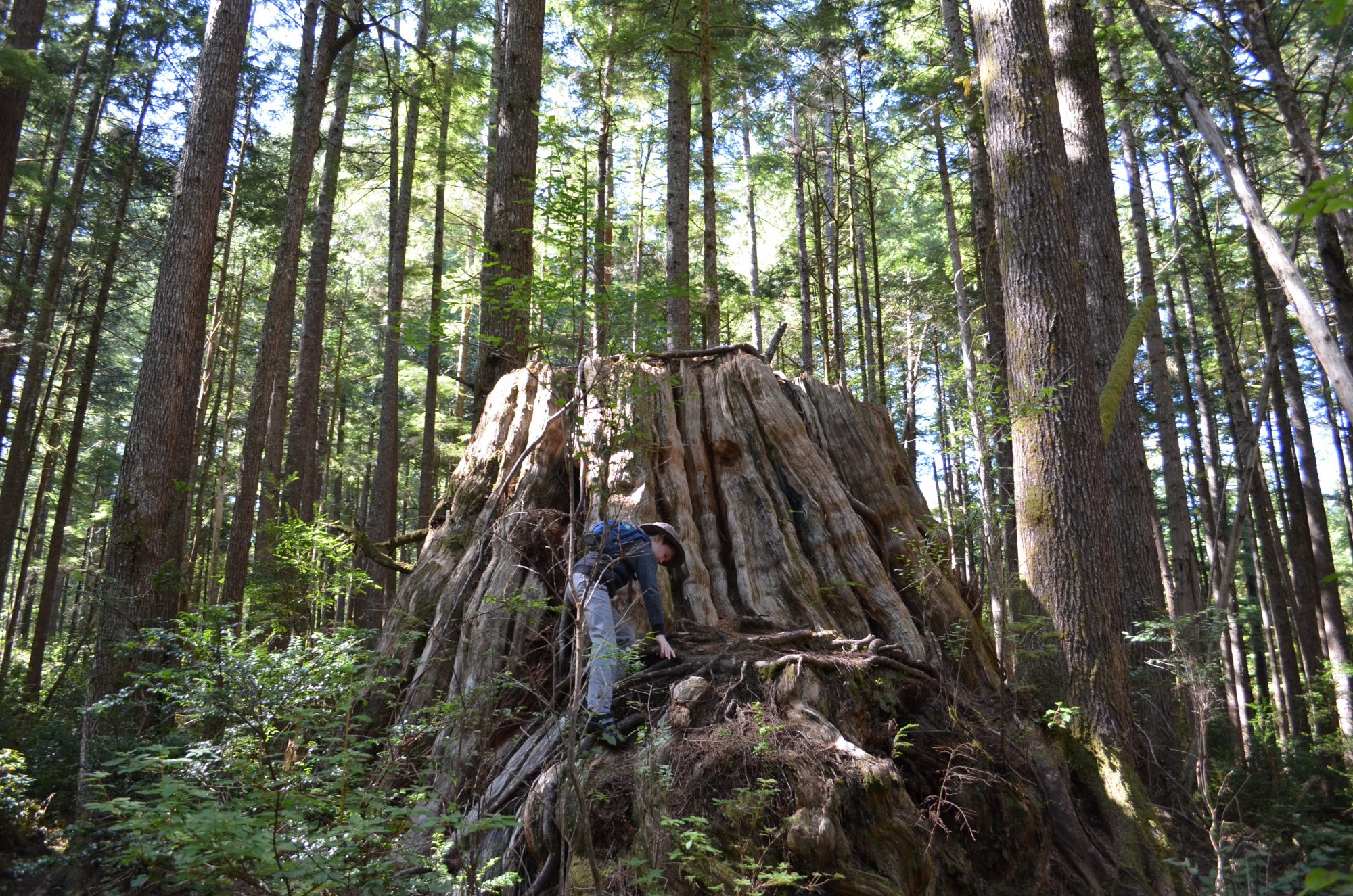Monumental adventures often grow from seeds of inspiration. We start small and dream big, a bit like the seedling that matures into a colossal coastal cedar.
Last weekend’s trip to Long Island, the nearly 5,500-acre uninhabited expanse inside Willapa Bay, served as just such a seed.
Friends of Willapa National Wildlife Refuge, a nonprofit dedicated to supporting Refuge programs and enhancing the Refuge’s awareness and appreciation, organized the afternoon adventure that was open to its members. Anyone interested in joining the Friends group can learn more here.
Long Island at a glance
So what’s there to see on a secluded island where the trails are groomed maybe once a year and access is governed by shifting tides? Quite a bit, it turns out.
The Pacific coast’s largest estuarine island is home to 900-plus-year-old western red cedar trees and large mammals like black bear, Roosevelt elk, black-tailed deer, river otter, and beaver. Bald eagles, great blue herons, and marbled murrelets abound. Pileated woodpeckers, flying squirrels and spotted owls nest in the cavities of snags, or standing dead trees, while Van Dyke’s and Dunn’s salamanders dwell beneath the fallen wood. Beyond the shores, the marine environment supports oysters, clams, crabs, salmon, and steelhead.
Three primitive campgrounds dot the island’s lower west side, one sits in the island’s interior and a fifth is near Lewis Slough on the northeastern shore. Visitors will find 20 campsites all together, and they’re available on a first-come, first-serve basis. The leave-no-trace ethic is encouraged. Interested campers should call the Refuge for more information. Anyone in need of a kayak can check out the rentals at Willapa Paddle Adventure in Raymond. Less sea-faring folks will enjoy the art trails at the Refuge.
We arrived via barge, which deposited more than 100 of us on a rock-strewn southwestern beach fronted by an anchored oyster boat. Long Island can only be reached by vessel; kayaks and canoes are ideal for short crossings. Our barge took the scenic route around the island’s southern tip to a western shore near Smoky Hollow campground.
Baby Island loomed in the near distance as the barge slowly churned through the bay. Exposed tree roots peaked through Long Island’s sheer, earthen cliffs as trees clung precariously close to the island’s edge. It was a wild beauty.
History on display
Long Island’s robust logging industry began in the early 20th Century and only ended in the 1990s with the efforts of area conservationists. Long before loggers arrived, the island was hunting, fishing and gathering grounds for Chinook, Chehalis, and Kwalhioqua peoples for at least 2,000 years. It’s not hard to bring the island’s history to life while tramping along the 10-plus miles of trails.
Giant tree stumps dot the paths and hide in the forest, offering glimpses into the island’s past while helping shape its future. Worn notches in the trunks’ bases speak to the springboards loggers once stood upon while hacking away with felling axes or working crosscut bucking saws. Charred stumps hint at long-ago lightning strikes. Fantastical fungi cling to fallen trees. The soft, mossy ground, in a state of constant transformation, bounces underfoot.
The Don Bonker Cedar Grove is a short jaunt through a stand of old-growth forest. Beach hikes line the island’s west side, while roads to Baldwin Slough and Paradise Point offer further exploration.
The Willapa National Wildlife Refuge Complex is a sprawling collection of public lands in Pacific, Cowlitz, and Wahkiakum counties in Washington, and Clatsop and Columbia counties in Oregon. And it’s hoping to grow. A new Natural Resource Center is being planned on the Long Beach Peninsula, and a Beach to Bay Trail connecting the Refuge to the Discovery Trail and the Lewis & Clark National Historical Park is planned. The trail would bridge multiple habitats, including the Columbia River, Pacific Ocean beaches, interdunal wetland and lakes, salt marshes and estuaries like Willapa Bay.
Standing among giants on the Trail of Ancient Cedars with my fellow hikers, I could easily imagine the island forest’s majestic solitude. The seed of inspiration was planted. Here’s to hoping a monumental adventure emerges.






